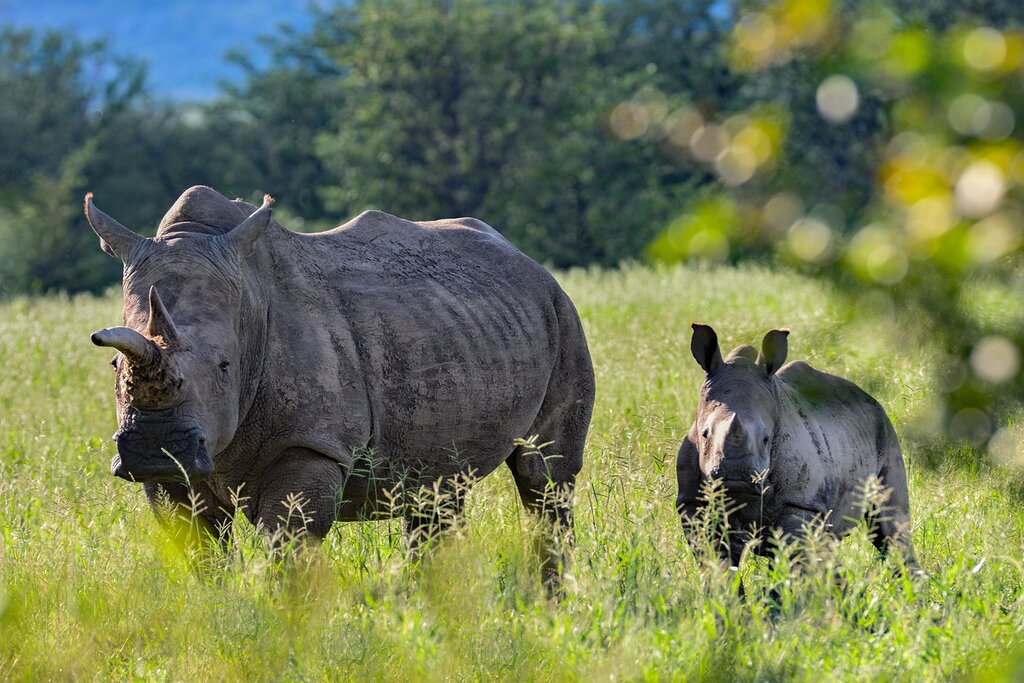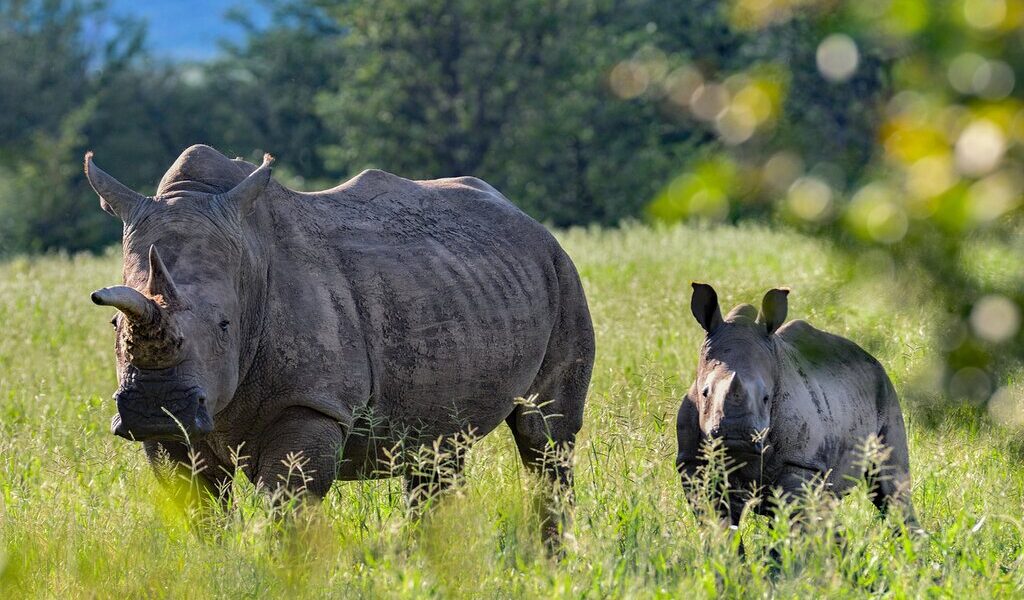
August is winter in Namibia and peak season thanks to the ideal conditions for wildlife viewing in the national parks and game reserves. As well as highlights such as Etosha National Park and the Ongava Private Game Reserve, visitors to the African country in August can enjoy some exciting cultural festivals in different parts of the country. Read on for more information on what you can see and do in Namibia in August.
August in Namibia: A Comprehensive Travel Guide
Namibia, nestled in the Southern Hemisphere, experiences midwinter during the month of August. This period offers a unique travel experience, characterized by generally dry conditions, making it an ideal time for exploring the diverse landscapes and abundant wildlife the country has to offer. However, it’s important to be aware of regional climate variations and prepare accordingly for fluctuating temperatures.
Weather in August
August marks the heart of winter in Namibia. While specific conditions may differ from region to region, the overarching characteristic of this season is its dryness. Rainfall is virtually non-existent throughout the country during this time, contributing to the clear skies and sunny days that are highly appealing to travelers.
Across much of Namibia, average temperatures hover pleasantly in the 70s Fahrenheit. This comfortable daytime warmth allows for enjoyable outdoor activities, whether you’re embarking on a thrilling safari adventure or exploring the unique geological formations. However, it’s crucial to note that temperatures can vary considerably depending on the altitude and proximity to the coast.
For example, Windhoek, the capital city of Namibia, situated at a higher altitude, tends to experience slightly cooler temperatures compared to the lower-lying regions. The nights in Windhoek can be particularly chilly, so packing layers is essential. In the desert regions, a dramatic temperature swing occurs overnight. While daytime temperatures can be quite comfortable, they can plummet to as low as 32°F (0°C) after sunset. This significant drop in temperature highlights the importance of bringing warm clothing for evening activities and overnight stays in the desert.
The Namibian coast, particularly the notorious Skeleton Coast, presents its own distinct weather pattern. The coastal region tends to be consistently cooler than the inland areas throughout the year. Winters along the Skeleton Coast are particularly known for their pervasive fog, which can create an eerie yet captivating atmosphere. This fog is a result of the cold Benguela Current meeting the warmer air of the desert, and it’s a defining characteristic of the region’s unique ecosystem.
Therefore, if your travel plans include safari excursions, remember to pack adequate warm clothing. Early mornings on safari can be surprisingly cold, and dressing in layers will allow you to adjust to the changing temperatures throughout the day, ensuring a comfortable and enjoyable wildlife viewing experience.
Crowds and Costs During August
August, along with the rest of the winter season, represents the peak travel period for Namibia. The country’s reputation as a premier safari destination draws numerous visitors during this time, leading to increased activity in the national park areas. The months of June, July, and August are widely regarded as the optimal time for wildlife viewing in Namibia. During this period, the vegetation becomes sparser, making it easier to spot animals. Additionally, the scarcity of water sources causes animals to congregate around the remaining waterholes, increasing your chances of witnessing incredible wildlife encounters.
Given the popularity of traveling to Namibia in August, it is strongly recommended to make accommodation bookings well in advance. Securing your lodging early will ensure that you have a place to stay and can avoid potential disappointment, especially in popular areas. However, it’s worth noting that Namibia, while experiencing increased tourist activity, generally doesn’t feel as overcrowded as some other east African safari destinations. The vastness of the country helps to disperse the crowds, allowing for a more relaxed and intimate experience.
The areas that tend to attract the largest crowds during peak season are Etosha National Park, Swakopmund, and Sossusvlei. These destinations are renowned for their exceptional attractions and draw significant numbers of visitors. Expect to encounter more people in these areas compared to other parts of the country, but with careful planning and an awareness of the peak season, you can still enjoy a memorable and rewarding experience.
Where to Explore in Namibia
Etosha National Park, situated in the northern part of Namibia, stands as one of the most sought-after game viewing areas in the country. Renowned for its abundant wildlife and stunning landscapes, Etosha National Park is often considered the premier location in Africa to observe the elusive black rhino. The park’s centerpiece is the expansive, salty Etosha Pan, a vast depression that attracts a diverse range of animals. In addition to black rhinos, Etosha National Park is home to a plethora of other iconic African species, including graceful flamingoes, majestic elephants, towering giraffes, stealthy leopards, and stately ostriches. The winter season is particularly advantageous for wildlife-spotting safaris within the park. The drier conditions cause animals to concentrate around water sources, increasing the likelihood of encountering them in their natural habitat. Around Etosha National Park, visitors can find a wide selection of excellent accommodation options, including luxurious lodges and immersive tented safari camps, catering to various preferences and budgets.
For travelers seeking a more secluded and exclusive wildlife viewing experience, the Ongava Private Game Reserve is an excellent choice. Situated adjacent to Etosha National Park, the Ongava Private Game Reserve offers a more intimate atmosphere due to its restricted visitor numbers. As a private reserve, it limits the number of guests allowed, ensuring a less crowded and more personalized experience. Lodging within the Ongava Private Game Reserve tends to be more luxurious, providing visitors with exceptional comfort and service. The reserve’s knowledgeable guides offer personalized attention, enhancing the overall safari experience. Wildlife enthusiasts will be delighted by the diverse array of animals inhabiting the Ongava Private Game Reserve, including flamingoes, giraffes, and both white and black rhinos.
Things to Experience
For travelers with an interest in immersing themselves in the rich tapestry of traditional local culture, August presents a unique opportunity with several exciting festivals held in different parts of Namibia. The highly anticipated Herero Day, a vibrant three-day festival, takes place in late August in Okahandja, a charming city nestled in central Namibia. During Herero Day, members of the Herero ethnic group gather to honor their ancestors through elaborate parades and captivating reenactments of historical battles fought against German colonialists. The festival is a powerful display of cultural pride and resilience. If your travel itinerary doesn’t align with the Herero Day celebrations in Okahandja, fret not. Numerous other festivals take place throughout the winter season, providing ample opportunities to witness local groups celebrating their culture and history through traditional song, mesmerizing dance performances, and captivating storytelling.
For a different cultural experience, consider heading to the picturesque coastal city of Swakopmund in August for the Küste Karneval. This vibrant festival is a German-style street carnival brimming with lively parades, tempting food stalls, entertaining clowns, dazzling costume balls, and other festive activities. Swakopmund also serves as a hub for thrilling adventure activities, including quad biking and sandboarding, providing adrenaline-pumping experiences amidst the stunning desert landscape. In addition to its cultural offerings and adventure activities, Swakopmund boasts beautiful German-style architecture and a vibrant beer culture, making it a worthwhile destination even if you can’t attend the carnival.
Key August Events
**Herero Day**, Okahandja: This three-day festival held in late August commemorates those who lost their lives resisting the German colonizers through elaborate parades and reenacted battles.
**Küste Karneval**, Swakopmund: A German-style street carnival featuring vibrant parades, tempting food stalls, captivating music, and lively dancing. Suitable for both adults and children.
Explore Namibia with these Itineraries
*Namibia Self-Guided Safari Tour: Etosha, Swakopmund, & More – 13 Days*. Immerse yourself in the ancient dunes of Sossusvlei and experience the unique coastal charm of Swakopmund, where African and German influences intertwine. Enjoy exceptional game viewing experiences, from the cozy Hobatere Lodge to the world-renowned Etosha National Park.
*Namibia Desert & Dune Safari Adventure: Kalahari Desert & NamibRand Nature Reserve – 5 Days*. Embark on a five-day adventure tour through Namibia’s vast and ancient deserts. Drive yourself to the Kalahari Desert, meet the Indigenous San people, take wildlife-filled game drives, and hike the epic three-day Tok Tokkie Trail through the NamibRand Nature Reserve.
B-1693

